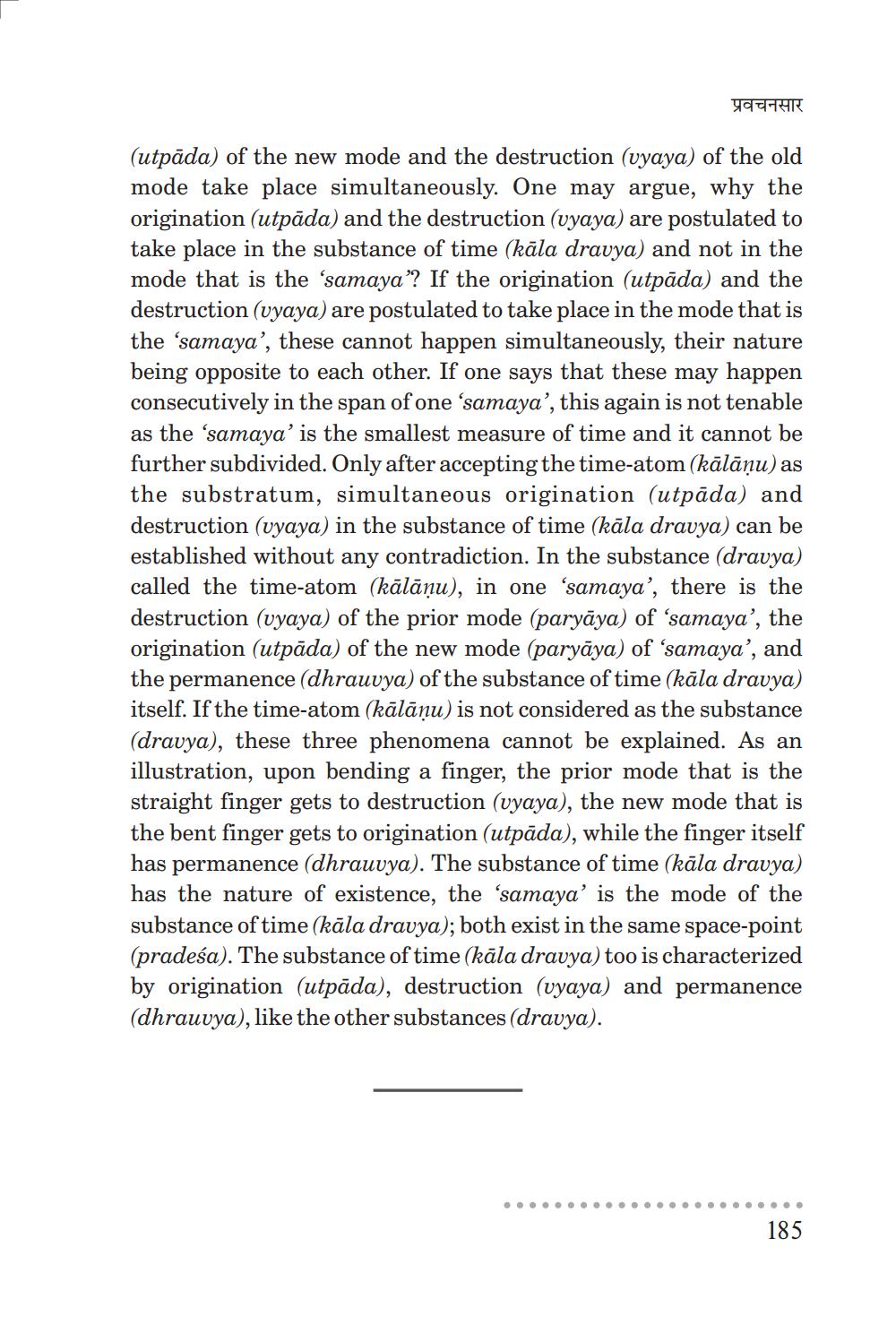________________
प्रवचनसार
(utpada) of the new mode and the destruction (vyaya) of the old mode take place simultaneously. One may argue, why the origination (utpāda) and the destruction (vyaya) are postulated to take place in the substance of time (kāla dravya) and not in the mode that is the 'samaya"? If the origination (utpada) and the destruction (vyaya) are postulated to take place in the mode that is the 'samaya', these cannot happen simultaneously, their nature being opposite to each other. If one says that these may happen consecutively in the span of one 'samaya', this again is not tenable as the 'samaya' is the smallest measure of time and it cannot be further subdivided. Only after accepting the time-atom (kālāņu) as the substratum, simultaneous origination (utpada) and destruction (vyaya) in the substance of time (kāla dravya) can be established without any contradiction. In the substance (dravya) called the time-atom (kālāņu), in one 'samaya', there is the destruction (vyaya) of the prior mode (paryaya) of 'samaya', the origination (utpada) of the new mode (paryaya) of 'samaya', and the permanence (dhrauvya) of the substance of time (kāla dravya) itself. If the time-atom (kālāņu) is not considered as the substance (dravya), these three phenomena cannot be explained. As an illustration, upon bending a finger, the prior mode that is the straight finger gets to destruction (vyaya), the new mode that is the bent finger gets to origination (utpada), while the finger itself has permanence (dhrauvya). The substance of time (kāla dravya) has the nature of existence, the 'samaya' is the mode of the substance of time (kāla dravya); both exist in the same space-point (pradeśa). The substance of time (kāla dravya) too is characterized by origination (utpăda), destruction (vyaya) and permanence (dhrauvya), like the other substances (dravya).
185




